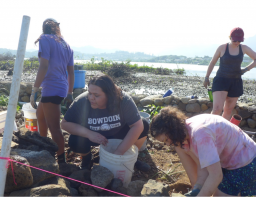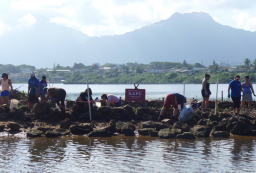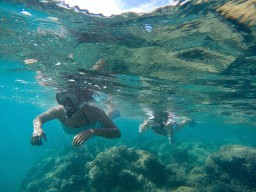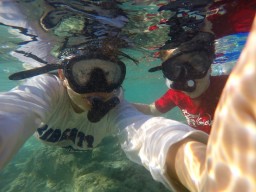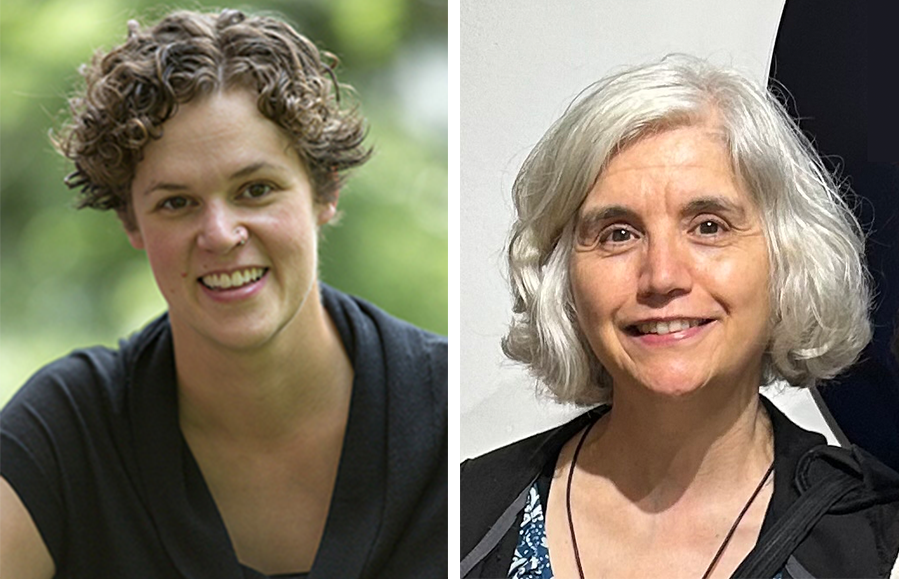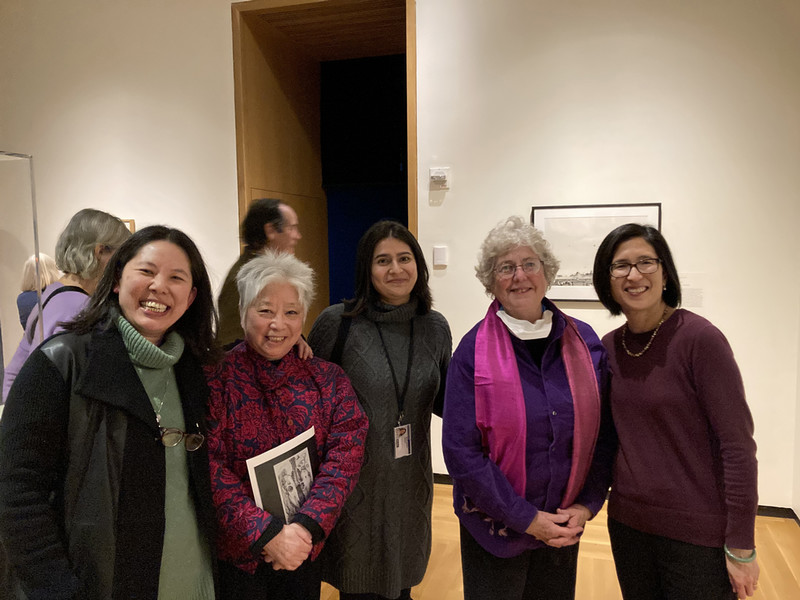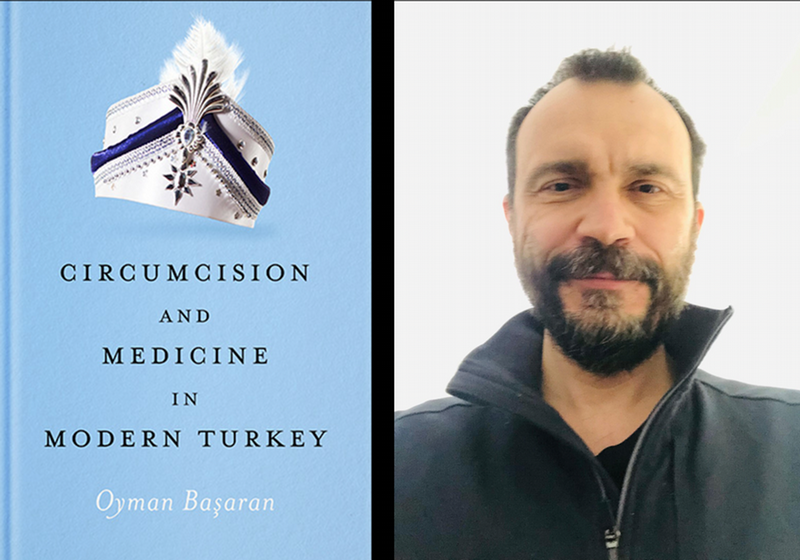Students Study Hawai'i in Person
By Bowdoin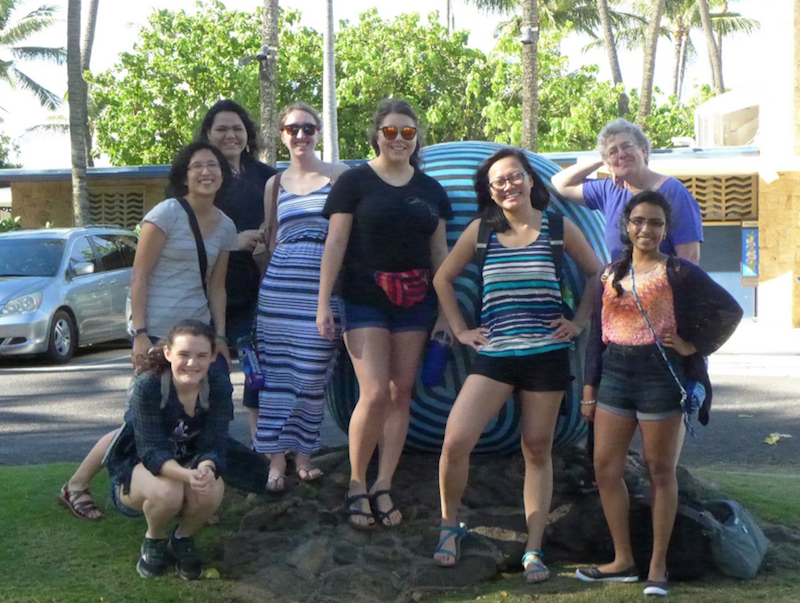
Professor of Sociology Nancy Riley and a group of students traveled to Hawai’i during the winter break to see firsthand what they had studied in Riley’s fall course, Cultural Encounters with/in Hawai’i.
The class covered three large influences on Hawai’i culture: colonialism, tourism and race/ethnicity. Riley noted that studying Hawai’i through the lens of race and ethnicity was especially enlightening to students because the state’s population is only about 20 percent white, which “challenges our understanding of race and ethnicity in the U.S. today.”
The group, which was joined by Associate Professor of History and Environmental Studies Connie Chiang, spent eight days in Hawai’i, nearly all of that time in Honolulu. In the city, the students saw the tourist industry in action, and participated in some tourist events.
“Having read an ethnographic analysis of tourist lū’au, we got a chance to see one ourselves, and consider what was being bought and sold at that venue,” Riley said. Lu’aus are traditional outdoor Hawaiian feasts, usually accompanied by dances to drums and ukelele music.
Students also participated in activities that show up less often on tourists’ schedules. They visited the Kamehameha Schools for Native Hawaiians for an afternoon of lectures and discussions. The visit was arranged with the help of a Bowdoin student who had attended the school. “We were able to hear about the challenges the school faces, from challenges to its admissions policies to efforts to revitalize and preserve Hawaiian culture,” Riley said.
Riley added that another highlight of the trip was the community service work the group did for a day. They worked at a fishpond, helping to rebuild stone walls. “Fishponds were historically central to Hawaiian way of life and community groups are working to bring these fishponds back into service,” Riley explained.
In addition, the students learned about the culture by sampling its cuisine. “One of the most obvious ways that we could see the influence of the different groups in Hawai’i — Hawaiians, immigrant groups who came to labor on the sugar and pineapple plantations, missionary descendants and others — was through the available food,” Riley said. “We ate a variety of foods connected to many of these groups. Clearly, learning can be great fun too!”
Below Bowdoin students help rebuild the rock wall at the He`eia Fishpond
